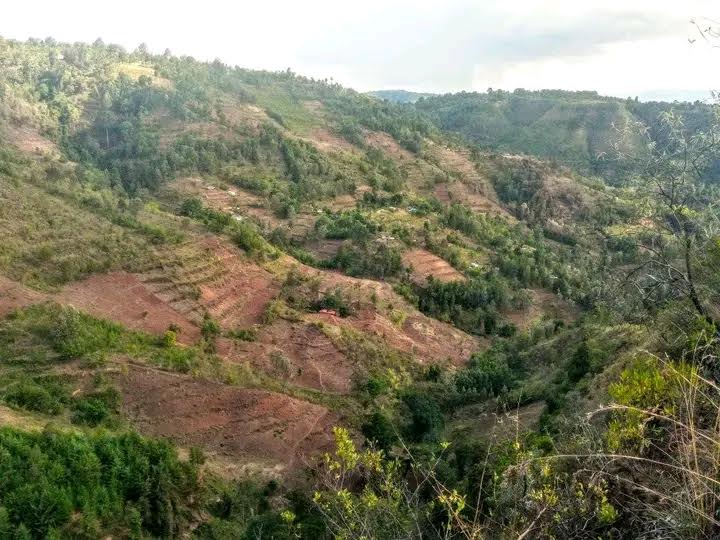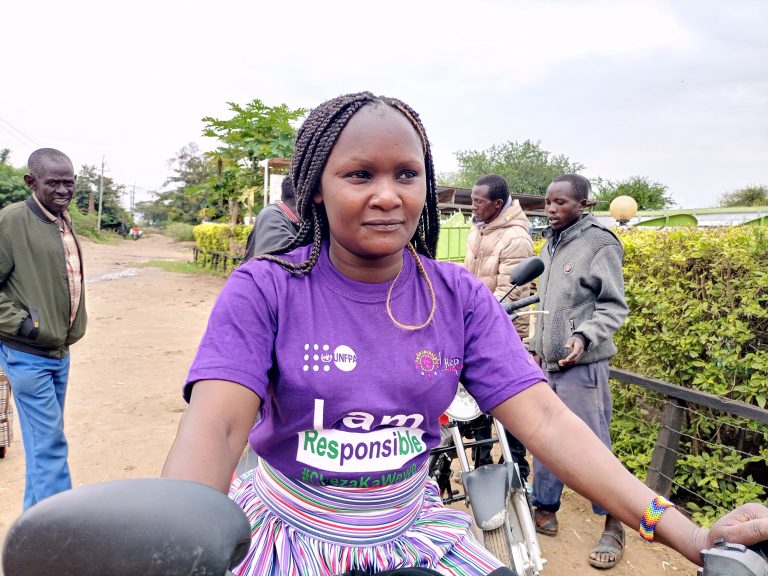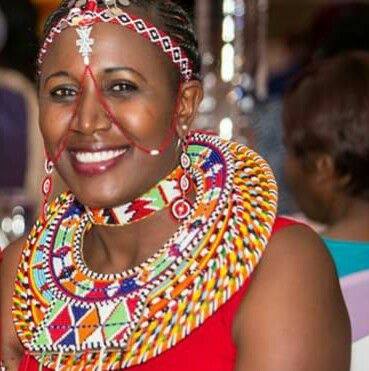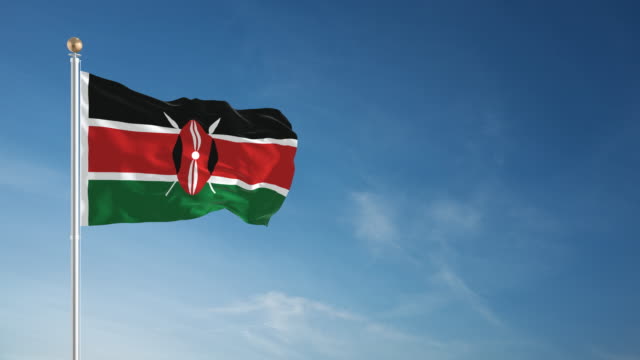My experience learning about Kukeketwa (FGC)

By Cecilia Mwakenya Trigger warning: this article contains graphic descriptions of female genital cutting (FGC). I was born and raised in Chachewa, a small village in Taita Taveta County, Kenya. Taita Taveta County is located approximately 360 kilometers from Nairobi, Kenya’s capital city. The Taita and Taveta communities are the most populous ethnic groups in the county, and I am a part of the Taita community. Growing up in Taita Taveta was an adventure for me because of the serene environment, being surrounded by the Tsavo national park which is a major tourism site in Kenya. Waking up every day to different wild animals and the mountains filled me with such an amazing feeling. It also helped me learn about my culture and the challenges that women and girls face in my community. This included the inability for some girls to afford sanitary towels, and in some homes, frequent violence directed towards women. When I was 13 years old, studying as an eighth grader in primary school, I met a friend of mine whom I will name Tatu for the purposes of this publication. Tatu was a cheerful and bubbly girl who shared funny jokes with us at school. Even when we weren’t in the mood for jokes, she would make us happy and soon we would be smiling like her. Behind her smiles, however, were tears, loneliness, and hidden scars. Like myself, Tatu is a native of Taita Taveta County. Unlike myself, she was subjected to FGC when she was only nine years old. As the youngest of six siblings, with four older sisters, Tatu knew to expect what her female relatives called Kukeketwa, also known as FGC. However, she was not prepared for the experience that would shape her to this day, which she told me about. “It all began when my mother began preparing me for a ‘ceremony’ that was to take place during the school holidays. I was in fourth grade and had no idea what the ceremony was about. As the days passed, my elder sisters began telling me about Kukeketwa and how they, too, had been cut. They said it was a transition from childhood to adulthood. I remember that fateful day, when they took me to a secluded dark hut where the whole process was going to take place. I was scared and started crying out loud. There was this woman popularly known as ‘Koko’, plus two other women including my mother. The other woman put a hand on my mouth, and the others tied my legs to the sides, and Koko took a sharp razor and cut my private part. I was crying and I looked at my private parts, and there was blood everywhere, splashing. Immediately they started singing and told me I am now a complete woman. When I reached home I found my other family members celebrating and singing songs of praises, because I had officially become one of them. It took me three weeks before I healed, but I never remained the same again.” I was so traumatized listening to her story. I did not know behind the exterior of the jovial Tatu, there were scars that will never heal. I was one of the lucky girls because my parents were educated about the harms of this practice, and even with the pressure around the community, they never allowed me to be cut. They were so protective of me, and that is something I am grateful for. In learning from Tatu about the harms of FGC, and living with the privilege of my own exemption from the practice, I grew up with the passion of wanting to work to end FGC. My work at Sahiyo is a part of this, because I believe it is possible to prevent FGC. I want to ensure no other young girls like Tatu will have to hide their pain deeply behind a smile.
The urgency of climate change: Reflecting on my conversation with activist Domtila Chesang

by Urvashi Sharma On a foggy day in October, I had the pleasure of speaking with Domtila Chesang, an inspired activist against female genital mutilation/cutting (FGM/C) in Kenya, and more recently a panellist on The Global Platform for Action to End FGM/C’s Climate Change and FGC webinar, to learn about her work and gain a better understanding of how climate change is impacting FGM/C. Though Domtila is not a survivor, her community is one that practices FGM/C: “I grew up in a village where everybody, all the older members of my family, the female members, had undergone FGM.” After a turn of fate allowed Domtila to witness her cousin being cut, she decided that she would not be cut. “I’m telling you one of the reasons why FGM is still happening in some parts of the communities is because of the celebration. It is a huge ceremony…There are dances. There’s singing. It’s like a one- or two-week celebration. That is not at the moment, because now it is against the law The prohibition of Female Genital Mutilation Act 2011… Nobody knows about the actual cutting and the pain and, of course, the suffering that comes after that.” Seeing this damage changed her perception of FGM/C. Luckily, her mother did not pressure her to undergo the practice. “Apart from one of my younger sisters going through it, none of the other girls from my family went through it after myself. So I became the first girl in my village to say I’m not going to be cut.” Over the years Domtila became more and more involved in the work to end FGM/C. “I got involved [in campaigning against FGM] after I went to high school because I wanted to protect more girls… By the time I was going to the university, I was already taking part in mentorships programs, and working with a group of women who had also decided to campaign against FGM… When I left university, I went straight to campaigning.” It wasn’t until I spoke with Domtila that I understood the urgent intersections of FGM/C with climate change: climate change is forcing communities to further invest in this harmful practice for their survival. “Climate change has really pushed people to the limit, beyond their limit, because… we continue to experience the worst impact of climate change, which is now forcing families to resort to the last solution to survive… We are pastoralists… So we entirely rely on livestock for survival… And now that the land has been degraded, now that there is no pasture, now that there’s no water, it’s becoming very, very scarce, and communities have been displaced.” Because FGM/C “is associated with a rite of passage… child marriage, and… acquisition of wealth,” there is a direct link to climate change. From this displacement and loss of sustenance comes the pressure on young girls to undergo FGM/C: “Girls are now at the centre of saving their families… It has become the only commodity apart from their livestock, because girls are not being extinct as livestock is. So the girls’ existence in itself is becoming a threat because right now, it’s becoming a solution to the communities.” Domtila expressed her frustration at the limits of her role in the face of this challenge: “It is really rendering me almost powerless. I cannot feed the community. I cannot provide alternative survival or livelihood to the community.” For me, this raised the question of context when it comes to advocating for values such as autonomy. In situations where survival is on the line, how do we decide who-or what- is more important? When I asked her about the long-term impacts of climate change on FGM/C, she had this to say: “There’s nothing that is being done at the moment. Very little, just a conversation at the global level, that is slightly prevalent at the national level, and there’s nothing at the community level. It is still a theory. And these people are not yet connecting the dots between climate change and all the other impacts. And I am here as a front-line advocate, but I do not really understand the full degree of climate change and how we can mitigate it.” Despite this vast problem and how it impacts her work to end FGM/C, Domtila cannot imagine dedicating her life to any other social issue. “I think everything about my work is valuable and exceptional… What makes me smile all the time is that seeing all these girls shining in their schools and seeing that all these girls have forgotten about FGM.” After our conversation, I was left with a combination of admiration, food for thought, and gratitude for the chance to learn from Domtila. I gained a new appreciation for the role of an activist, re-evaluated my own developing role, and was inspired by Domtila’s fierce promise of protecting the girls in her community. Domtila Chesang has been advocating for girls and women’s rights since 2014 through various initiatives, including working to end female genital mutilation (FGM), child marriage, and other harmful cultural practices. As a full time women’s rights advocate, Domtila founded I_Rep Foundation, a community-based organisation that serves to sensitise her community on the harms and negative implications of the practices by creating awareness and providing platforms at the community levels for learning and dialogues. I _Rep Foundation is currently directly and indirectly providing educational scholarships to close to 100 girls in different schools. Overall, this work has prevented thousands of girls from the cut and supported her community with the capacity to protect their daughters from violence. Domtila with a reformed cutter in Otiot downing her tools (2021).
A Tradition That Branded Me

A Kenyan Woman’s Take on FGM/FGC in the Bohra Community

By: Zarina Patel Country of Residence: Kenya Age: 81 years I only very recently heard a fleeting mention of FGM being practiced in the Bohra Community in my country, Kenya. It was in a group conversation where I was adamantly protesting against the FGM still being inflicted on Kenyan women in spite of it being an illegal procedure in Kenyan law since 2011. It was my first time to hear the word ‘khatna’. Though I am a Bohra thankfully my late parents did not subject me to it. And so hush-hush is this ritual that my subsequent enquiries bore no fruit. But in the process, I came across SAHIYO – a windfall. FGM or FGC, extensive or minimal, is today recognized by the United Nations as a human rights violation and is one of many manifestations of gender inequality. To drag an innocent young girl child into a dark room and forcefully inflict this wound on her body; subject her to excruciating pain and most probably tell her never to speak about it as if she has committed a crime – surely this is unacceptable by any standard of human behaviour. I think any caring and ethical person will agree that it is a violation. I am interested in looking at some of the more analytical aspects of FGM in our community. First of all, I cannot help wondering why male circumcision is an event celebrated with much feasting and publicity, while its female equivalent is often done so secretively and in such isolation. The only reason I can think of is that those who perform, or arrange for, this latter act know that it is both criminal and unjustifiable and that no young girl would agree to it if asked. Male circumcision is performed to remove the foreskin of the male organ and in this day of HIV infections male circumcision has proved to be highly beneficial; even men in our Luo community (which is often referred to as the community of the uncircumcised) are embarking on it. The World Health Organization states ‘compelling evidence’ in support of this. There are no proven health benefits for FGC. Often, female circumcision is performed to reduce, if not eliminate the sexual ‘urge’. There are those who claim the opposite – that FGM enhances sexual pleasure because you are exposing the clitoris even more so, but this assertion cannot stand up to scientific reasoning. Can there be a better example of patriarchal domination and discrimination? And please note, the clitoris is one of the centres of sexual pleasure, NOT the urge which precedes the act. The urge is the result of the hormones racing through our bodies which the Almighty created. I would earnestly request my sisters, and the concerned menfolk, to give some serious thought to the practice of FGM/FGC and not to blindly follow some religious or traditional edict. After all, even in Islam directives made some 1400 years ago are being reviewed: Examples are the attainment of talak (divorce) by just three utterances (by the husband of course!) being made unlawful and the conditions for marrying four wives being made almost impossible to fulfil. And lastly do keep in mind that the practice of FGM is much older than Islam, it was already prevalent in the time of the Prophet Abraham. And it is not only Muslims who practice it; several one-time animist and now largely Christian ethnic communities also inflict this violation on their women. FGM is practiced in 30 countries in the world. One of the major propaganda tools used by our founding Kenyan president, Jomo Kenyatta, in his struggle against British colonialism was to urge his people to resist the order of the white Christian missionaries and the colonial officers for the banning of female circumcision. In those historical times the order was viewed as a form of cultural imperialism. In one of the videos available on the SAHIYO site, a woman who performs this vile act claims, when asked the purpose of this procedure, that it promotes moral behaviour. She actually states that the Bohra community has a much lower incidence of extra marital sex and adultery by women compared to other communities in India. Really? Has she carried out a survey, done the required research on this topic? Has anyone for that matter? It would certainly be a very interesting study but almost impossible in my reckoning – which woman is going to admit to a researcher (or anyone) that she is sexually ‘free’? I do hope that we are well past the age of just believing when we now have the educational tools to analyse issues and understand the processes. Is it not Islam of all religions that urges its followers to search for enlightenment even if it means traveling to the ends of the earth?
